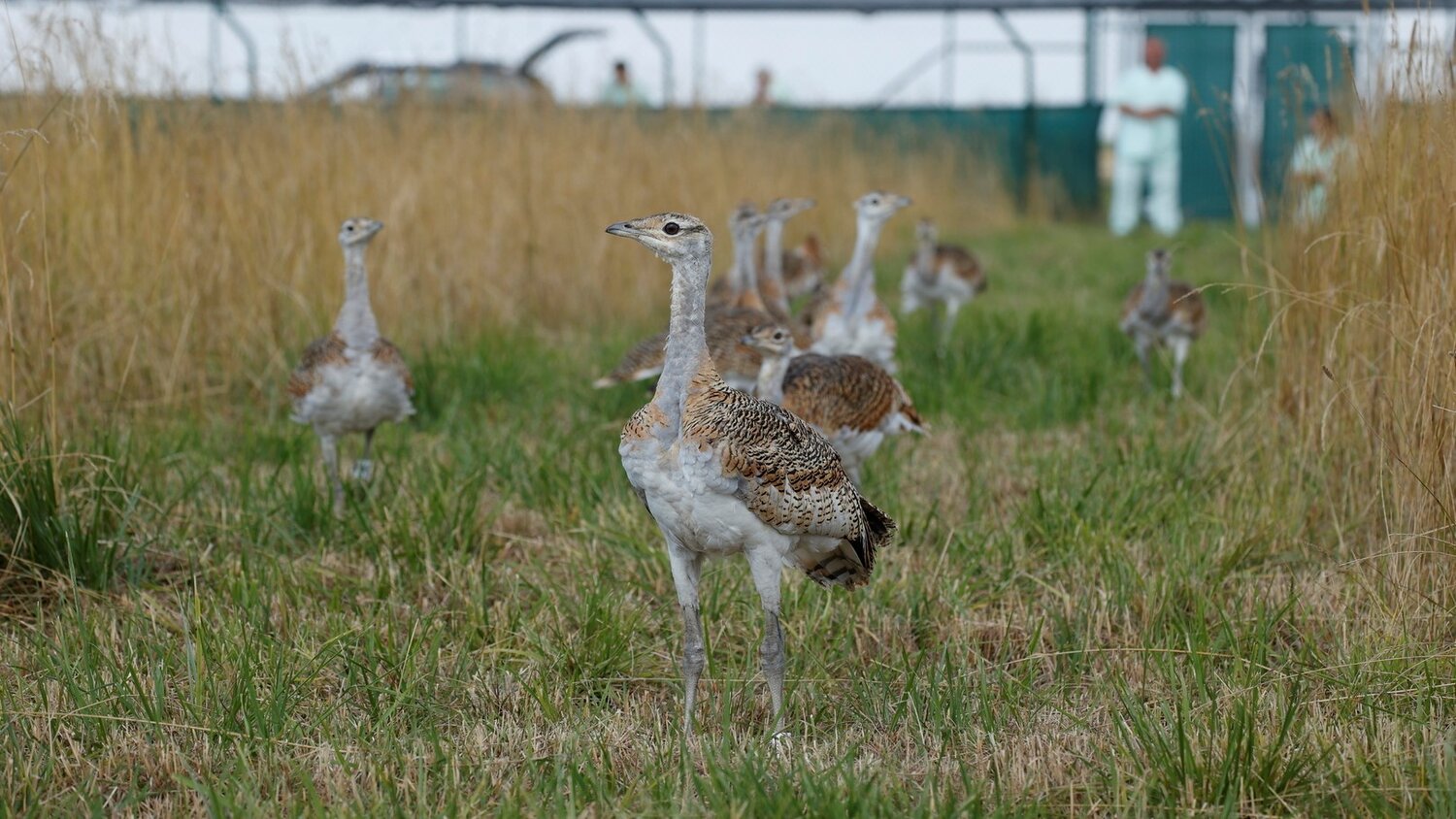Weighing in at up to 17 kg, the great bustard is one of the heaviest flying birds in the world. It is also a highly threatened species that was once almost completely wiped out in Germany. But things are now looking up for the bird’s survival. After an extensive reintroduction campaign saved the great bustard from extinction in this country, another important step should help with its conservation: the establishment of a new wild population in the Zerbster Land bird reserve in the German state of Saxony-Anhalt.
Great bustards were once common throughout Europe, but intensive farming practices have decimated their numbers. The great bustard has already been declared extinct in some European countries, while it is critically endangered in others. The outlook for these magnificent birds looked similarly bleak in Germany back in 1996, when only 57 individuals were reported living in the country. The friends association Förderverein Großtrappenschutz has been committed to protecting this rare species for around 30 years and successfully saved the German great bustard population from extinction. The conservationists carry out crucial work such including the intensive management of areas where the birds breed, raise their young and spend the winter and the reintroduction of hand-reared birds into suitable habitats. After hitting a low point in the mid-1990s, the German population of great bustards now stands at over 300. Every year, the non-profit association hand-rears great bustard chicks in order to subsequently release them into protected areas in the wild. Nine more great bustards have now completed their acclimatisation period – during which they still spent the nights in an aviary – and have been set free in their new habitat. Also, a new release area was established this year in the Zerbster Land bird reserve, meaning the association is now active in a total of four protected areas in Germany.
Hand-rearing and reintroducing great bustards is a very time-consuming and costly task. First, eggs deemed at risk are collected from nests in the wild. The eggs are then hatched and the young are reared in a way that prepares them for life out on the open grasslands. “As experts in the breeding of some quite demanding animals, we can certainly appreciate the effort that our colleagues from Förderverein Großtrappenschutz are putting into saving the great bustard,” said Zoo and Tierpark Director Dr Andreas Knieriem on the occasion of the latest release. “I would like to express my great respect for the team’s commitment and say how pleased all of us at Tierpark Berlin are to be supporting this project.” Tierpark Berlin has funded the conservation and reintroduction project since 2016. “Clearly, the hard work of our partners on the ground is crucial for adequately preparing great bustards for life in the wild,” said Matthias Papies, Senior Curator at Tierpark Berlin.
The association’s work begins each spring: the chicks hatch in early May and are then looked after until late October or early November – primarily by volunteers. During this phase, the birds are taken on multiple excursions to prepare them for daily life in their natural habitat. They learn to navigate open grassland and agricultural areas, ensuring they will be able to sustain themselves independently later on.
With their Berlin World Wild conservation programme, Zoo and Tierpark Berlin are cooperating with more than 35 partner projects to protect threatened species around the globe. They fund the research and educational projects and occasionally provide strategic support as well.
